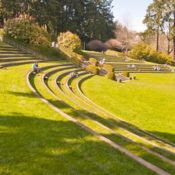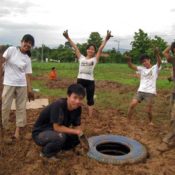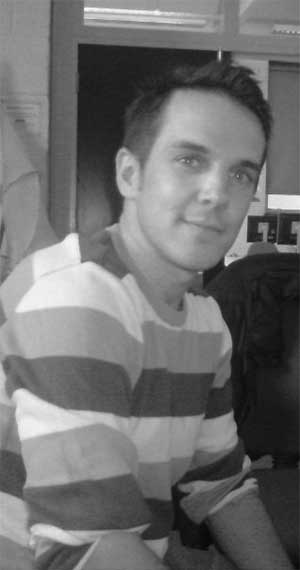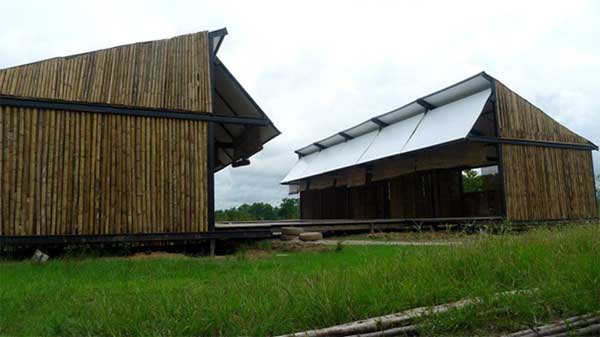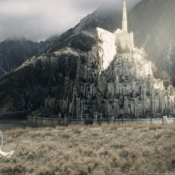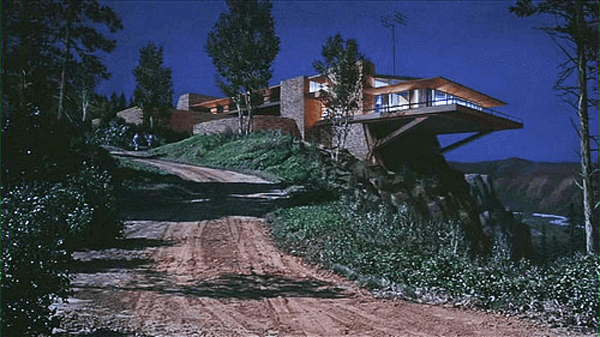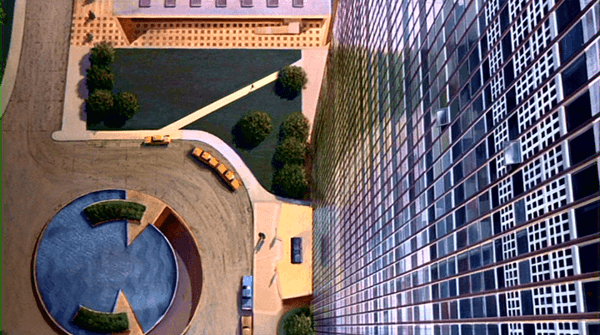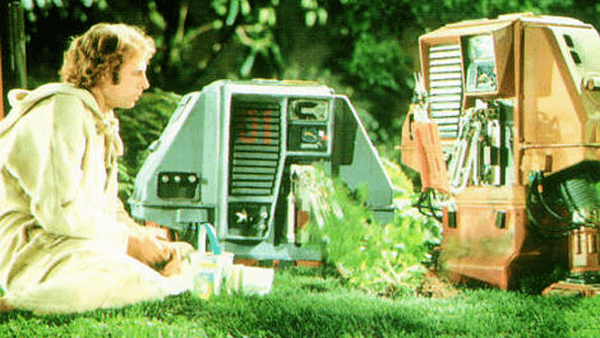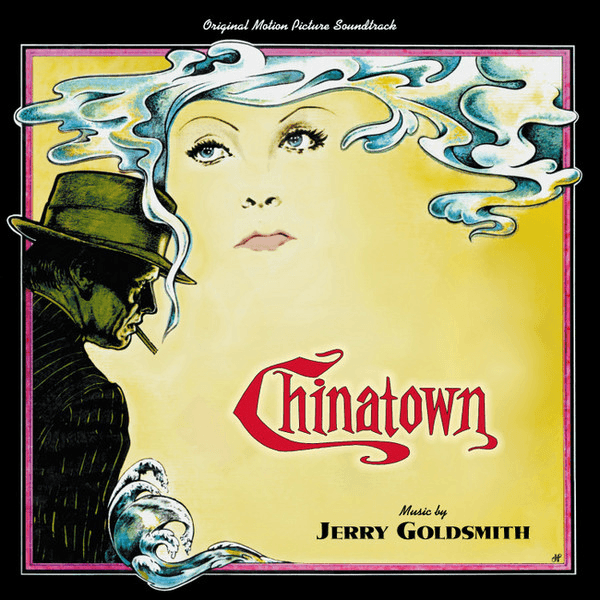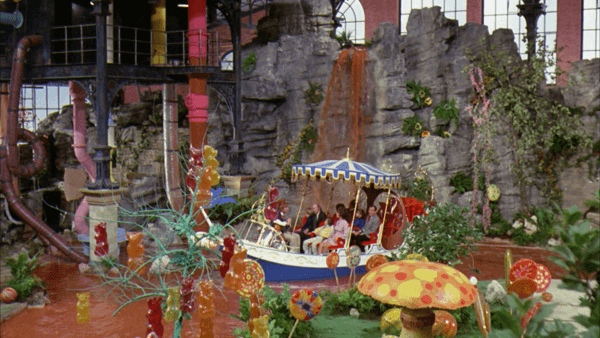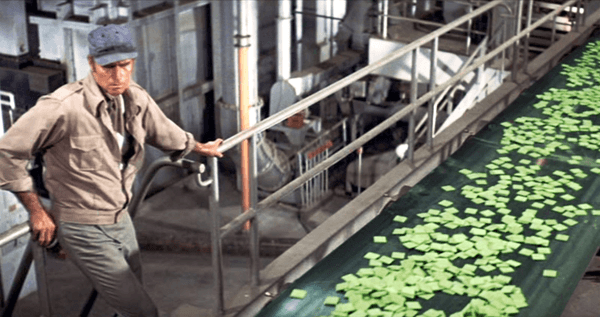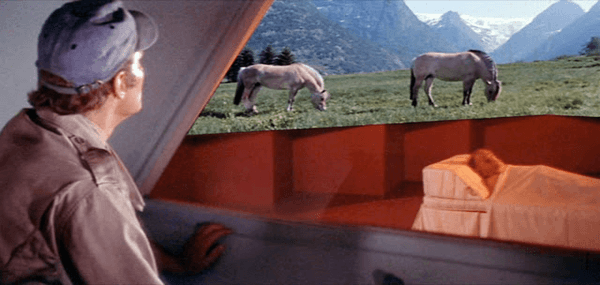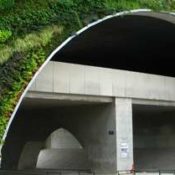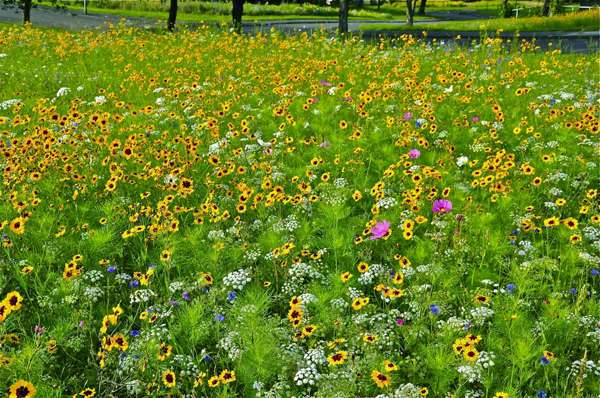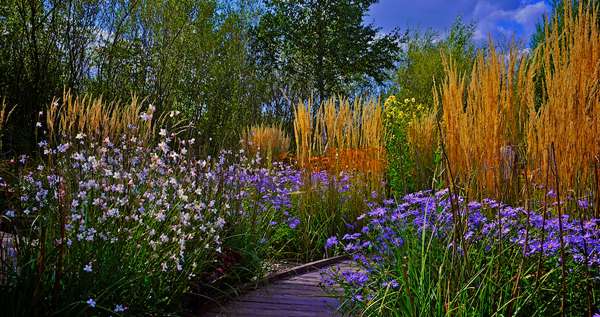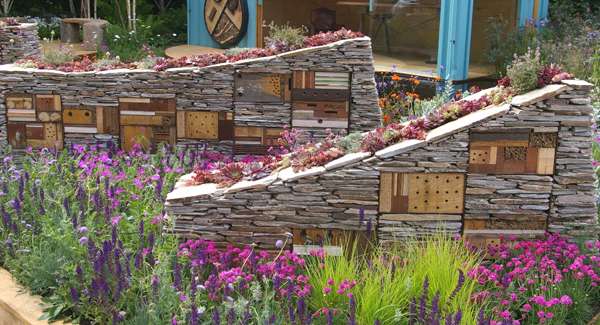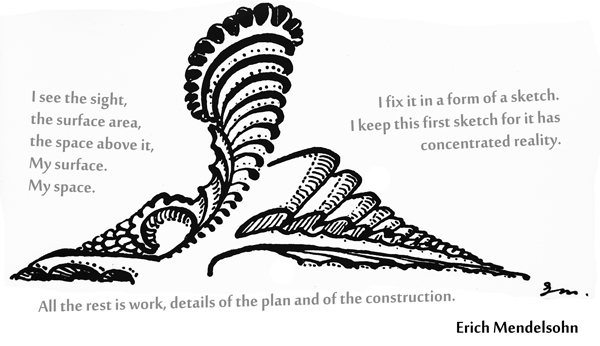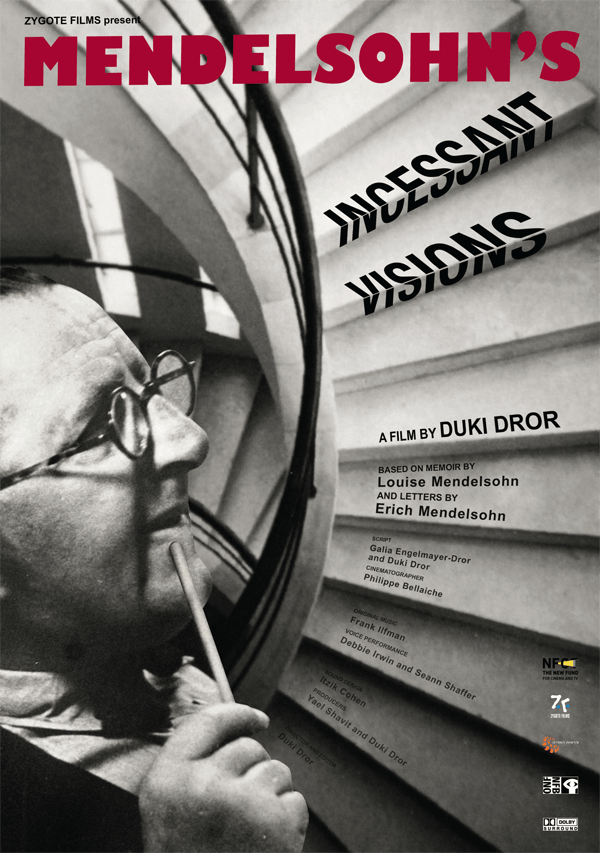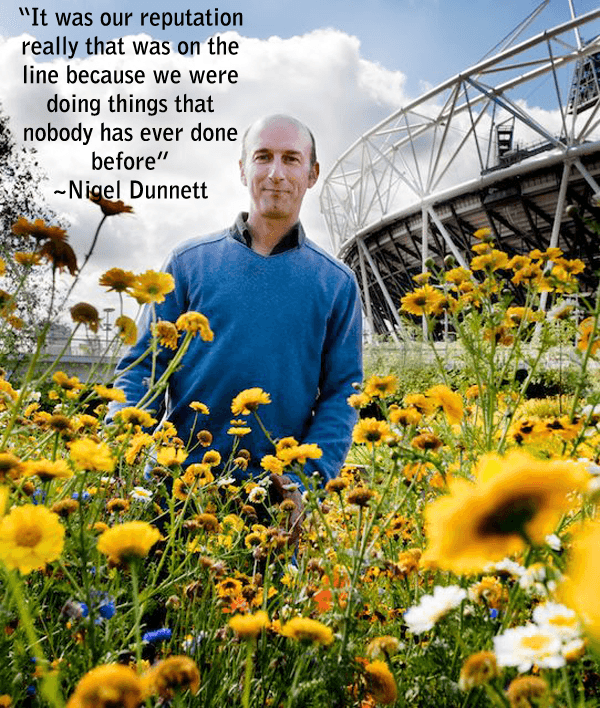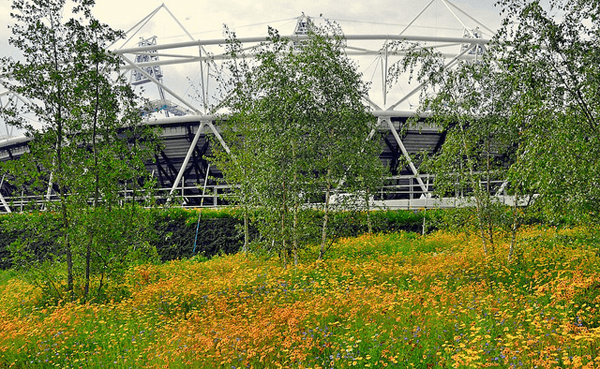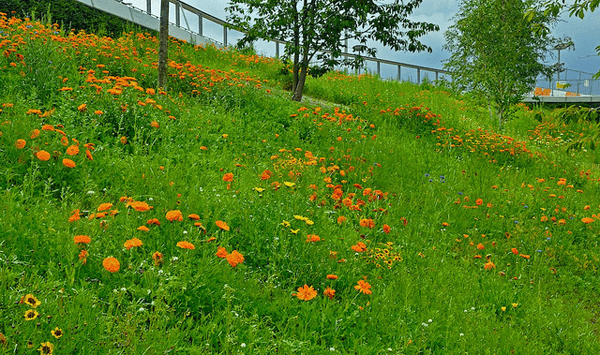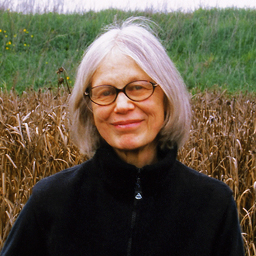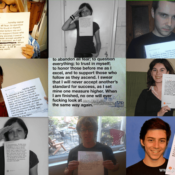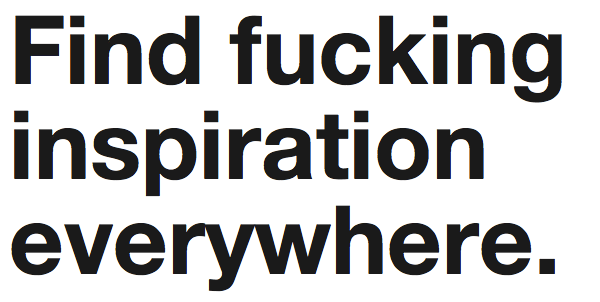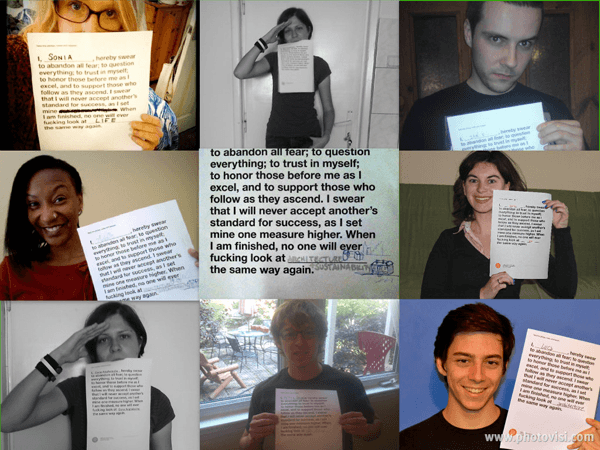Author: LAN
The Fun Theory
Over the past few years, one way or another, you have probably heard of ‘The Fun Theory’. Or perhaps you’ve seen some YouTube clips of the famous Fun Theory, for example a Piano Staircase? Or what about the one with The World’s Deepest Bin? Or The Bottle Bank Arcade Machine? These three YouTube clips were used in The Fun Theory campaign run by Volkswagen. The principle behind the Fun Theory is that the easiest way to change people’s behavior for the better is to make whatever they need to do fun. By making climbing the stairs more fun, more people chose to ignore the neighboring escalator. Easy peasy! The Fun Theory, the brainchild of advertising agency DDB Stockholm, was a fantastic success, it went viral; people were inspired, enthused, and the Fun Theory award garnered over 700 entries. People were having fun and trying to persuade others to act responsibly, whether it was for health or environmental reasons. It didn’t even seem remotely connected to the Blue Motion Technology cars (the most eco-friendly cars in the Volkswagen range) that it was trying to promote. In what has to be one of the most clever and engaging pieces of marketing of the 21st century Volkswagen re-branded themselves as an eco-friendly, fun, and exciting company. Well-done Volkswagen. But what is really behind the fun theory? Is it as simple as fun equals act more responsibly? If we take a look at the entry that won the Fun Theory award, Kevin Richardson’s The Speed Camera Lottery, what we see is essentially bribery. Harsh words perhaps, but at the end of the day that’s what it is, although without any truly nasty intentions behind it. The Speed Camera rewarded those for not breaking the law by entering them into a lottery of money, which was accumulated from the fines of those that had broken the speed limit. The Fun Theory is essentially a form of operant conditioning, a type of learning whereby an individual’s behavior changes due to the consequences felt. Psychologist B.F. Skinner coined the term operant conditioning in 1937. The most famous example of operant conditioning is the Skinner Box. Essentially, when a rat or small animal is placed in a box and its behavior is observed during trials, where it is either rewarded (food) or punished (a quick zap). That’s not to reduce it to pure boring black and white; Volkswagen has really hit the nail on the head by calling it the Fun Theory. Things we should be doing anyway, such as obeying the law, recycling, not littering because it is the utilitarian option, is often not done simply because it requires more effort and we are selfish. Yet what if that option was fun? Personal enjoyment becomes the reward. What can we as Landscape Architects learn from the Fun Theory? Well, the theory also crosses over into the bounds of environmental psychology. We are always in a physical and mental dialogue with spaces. Why are some spaces comfortable? Why are others harsh and unwelcoming? As the Fun Theory relies on certain ‘triggers’ to motivate us, the question becomes, what elements can we place within the landscape so that people are healthier, happier, and more likely to be environmentally-friendly? All three experiments by Volkswagen (the stairs, the bottle bank, the bin) as well as having a function also called attention to themselves. They can be used as examples to teach us a lesson about the design of public space and the composition of elements within them. All three exemplars were delightful and engaging – optically, emotionally, or physically. If you design a neighborhood that has no recycling areas, how likely are the residents to recycle? Urban designer Jan Gehl asks questions like fewer roads means less traffic? Which ultimately means more walking or cycling. Better space denotes better city life, which encourages social interaction and enhances community values. What all three aspects (environmental psychology, the fun theory, operant conditioning) share, is that they all focus on human behavior. It’s about long-term behavior and attitude change. Perhaps when the piano staircase was removed, a certain percentage of people still used the stairs. As Volkswagen states, “the Fun Theory became more than a campaign, it became a way of thinking.” The Fun Theory is only one way, though, of changing peoples’ behavior. We should design with fun and reward in mind and continue to learn from our mistakes. Yet how many more “electric shocks” (floods, low grain reserves, cancer related to genetically modified crops) will it take? So in the end, although we try Fun Theories and they do partially work, some may say “electric shocks” are the only things that work on the majority. Rather than adopt this attitude however, it is critical that Landscape Architects lead by example and help create solutions to existing and future ‘electric shocks,’ while applying the principles of the Fun Theory to inform their design. Because after all, there’s nothing like a bit of fun! Article written by Sonia Jackett
This article was originally submitted to Landscape Architects Network
Top 10 Documentaries For Landscape Architects
There is a certain persuasion in documentaries that is not often found in books. Sometimes actually seeing, visually dissecting, a narrative can be more inspiring and engaging than words on a page. The documentaries below can be quite different in their style and delivery – what is important however, is that they all seek to explore man’s relationship with his (natural or unnatural) environment. And as a Landscape Architect, it couldn’t hurt to see a few…. Here we take you through 10 of the best documentaries for landscape architects out there, covering topics such as urban design, landscape architecture, sustainable design, biophilia, climate change and urban planning. These are films that will make you think, generate discussion within your own mind and make you question your own design decisions. Indeed, these are films to watch with colleagues, like minded friends and classmates. Get the popcorn, its movie time! 10. The Big Uneasy Complete with New Orleans jazz and John Goodman, Harry Shearer looks at what happened when Hurricane Katrina hit the US city. Yet this is NOT a film about a natural disaster. What is revealed is that the flooding was caused by more than four decades of misguided construction and design. At a time where floods are causing trouble world over, and landscape architecture is driven towards WSUDS – this is gripping, damning stuff. Get it HERE! 9. The Age of Stupid This piece of docu-fiction weaves together six documentaries, which are presented by ‘the archivist’ in a tale of hubris and …stupidity. It highlights that climate change and global warming are not just real, but unless true change is made, further consequences will be felt in our lifetime with devastating effects. Get it HERE! 8. The End of Suburbia Cheap and abundant energy is coming to an end – a nation on wheels, a generation of sub-urbanites will have to change. Half of the American population lives in suburbia. Will peak oil reverse globalization? Will a more holistic, localized form of development be the future? Get it HERE! 7. Urbanized Not groundbreaking but this film is generally a good overview of the issues facing cities, and thus the world, as we see the planet become more urbanized. Travelling from Mumbai, to Brasilia, to New York and Germany, different levels of urbanity and urban design are looked at; ranging across large-scale infrastructure to low-level interventions with community involvement. Get it HERE! 6. Edible City: Grow the Revolution There is an ever-increasing need for food to become an intricate part of our landscape. This inspiring documentary not just examines the why, but mainly focuses on established examples of how it is possible to work with nature and our cities in order to produce food for local people. 5. Manufactured Landscapes Through the photography of Edward Burtynsky, Manufactured Landscapes, provides us with a haunting, though often visually stunning, image of the ’landscapes of our time.’ Burtynsky examines the effect industrialization and manufacturing has on our world and asks if the landscapes of our time are the ones we disrupt in the pursuit of progress? Get it HERE! 4. The Nature of Cities As our world becomes ever more urbanized we must find a way to integrate ourselves within nature in order to maintain our survival. Professor Timothy Beatley travels across America and Europe talking to planners, landscape architects, ecologists and communities. There are some poignant insights offered by Richard Louv (he who coined the term ‘nature-deficit-disorder’) and Dr. Stephen Kellert from Yale (Biophillic Design). 3. Biophilic Design: The Architecture of Life Dr. Stephen Kellert advocates that we designed ourselves in to many of the messes we are presented with today, and thus we can design ourselves out of them. This can be done by biophilic design. The documentary explores how nature and architecture have come together to create hospitals were patient recovery rates are greater and offices where employees are more productive due to a connection with nature and the environment. Get it HERE! 2. The Social Life of Small Urban Spaces In this short film, William H. Whyte examines why certain spaces are popular and others not. A seminal piece of work that changed the way our public spaces are designed and built; namely that places should be designed for people. Vitally, it is as relevant today as it was 30 years ago. Get it HERE! 1. A Convenient Truth: Urban Solutions from Curitiba Sick of all the depressing why we should change documentaries? Want an uplifting how to/it is possible one? Then watch this. Curitiba, Brazil has been undergoing major changes since the 1970s in transportation, recycling, affordable housing and implementation of green space. Inspiring and hopeful, a true example of how a determined population and supportive governance can reverse or at least, negate the negative effects of urbanization. Get it HERE! These are a mere ten in a colossal range of documentaries currently depicting the problems society faces; peak oil, flooding, food crises and some that offer hopeful solutions. What is their message? To galvanize us into making a change. What ones motivate you? Article written by Sonia Jackett Return to Homepage Featured image: shutterstock.com
This article was originally submitted to Landscape Architects Network
Interview: Landscape People
Landscape People is a great and simplified means for finding a job in the domain of landscape architecture and for companies to find their wanted landscape architects. It is the solution to helping the landscape architecture working domain. To understand how it all works, I talked to Michael Burton-Nickson, founder of the company. If you’re a fresh student looking for a job or looking to renew your career you might want to read!
- What services does Landscape People offer as a company? Please describe your activity to our readers.
Landscape People aims to provide a platform where landscape architects can highlight their skills and show potential employers what they have to offer. This is done by completing the only landscape architecture specific ‘online profile’ anywhere on the internet. Our day to day activities include scouring the internet looking for jobs across the whole world but we predominantly focus on the UK, Middle East and the Far East. We call employers and try to find out when they might be ready to begin recruiting and try our best to highlight the benefits of our website over traditional recruitment agents.

Michael Burton-Nickson, founder of the Landscape People
- What are the characteristics that make Landscape People a better option for finding a job or an employee in the domain?
Landscape People acts as an impartial platform for both employers and job seekers alike. For job seekers, instead of waiting for jobs to be placed with us, we hunt for the best jobs and try to find jobs that are not advertised anywhere else. Also by providing an online platform to advertise yourself, you can stand out from other applicants and show employers what they what to know at the click of a button. For employers, we are the only employment portal to have its job seeker database completely available online which is specific to the landscape architecture profession. We provide several search tools which help employers to filter through our database. These include an address/postal code search and a skill specific or career level specific search, giving employers total control over the people they are looking for.
- What are your opinions on today’s working landscape architecture market? What is the situation in regards to development and hiring?
The employment market within landscape architecture is vastly different to when I started my career 6/7 years ago. Back then there were plenty of practices and plenty of jobs kept appearing regularly in my area of Leeds, UK. After the global economic crisis, things have changed drastically and jobs often appear in locations many miles away from where people live. This can be seen as a bad thing but I like to stay positive and if you’re prepared to travel and are flexible, the chances are that you can gain some fantastic career experience by travelling the country you live or even further afield to places like Dubai of Hong Kong.

Get a job as a Landscape Architects in Dubai and design projects like Burj Khalifa Park by SWA Group
- What top tips can you give to students fresh out of university that are searching for a job in landscape architecture?
- Contact employers directly – Employers don’t like hearing from recruitment agents about graduates, but if a graduate can get his or her foot in the door by speaking to them directly, then you will have a greater chance of finding that first position
- Ask an employer for work experience – Often graduates have no work experience on their CV that is related to landscape professional practice. Try and get some work experience, working for free, so that you can get used to the office environment.
- With the landscape architecture working domain looking a bit bleak, you initiated a campaign called ‘Save British Landscape Architecture’. Tell us a bit about that.
I started this campaign because in the UK, we had a large number of recently graduated landscape architects who have no work to go into and are taking jobs in other sectors just to make ends meet. Save British Landscape Architecture is a campaign to help graduates find work experience to put on their CV. The best way to get experience in the current climate is to work for free as a work experience placement. So I started this campaign in the hope that employers would begin to offer a 2 week work experience placement to graduates, but I have found it harder to establish than I first thought. The problem I have is publicising the campaign and getting companies involved from the UK.

Work experience, you never know where it might lead you.
- What role do you think landscape architecture plays in people’s lives and what does the future hold for this domain?
The future of landscape architecture is complex. The world in which we live is constantly changing from both an environmental, climatic and visual point of view.Landscape architecture plays an important role in people’s lives, but it is usually a hidden role that only the trained eye can see. Landscape architects influence the shape of our urban environment and carefully manage the wider landscape in which we live and play. From designing small parks, to choosing which paving is laid at a new bus stop, landscape architects influence almost everything we come into contact with every day. We need to nurture our planet and make sure it will be here for our children and our children’s children. We can only do this by ensuring decision makers have the proper advice to hand and can plan properly for the future. In the immediate future, the landscape architecture profession needs to stand up and make its voice heard on both a local and international level. Websites such as ‘Landscape Architects Network’ help keep international professionals informed on current projects and topical issues throughout the world. Without these we would be starved of the creative inspiration of our world-wide professional partners. Landscape People provide an incredible platform which makes it easier for companies to sample the market and save top dollar on getting the right person for the intended job. The fact of the matter is that landscape architecture should not be taken for granted in all the uses that it offers and in the ways that it makes life better, easier, more practical and in the end more beautiful for most people. If you think Landscape People can benefit you, don’t hesitate to sign up here. Interview conducted by Oana Anghelache Enjoy what you’ve read! Support us and pick up one of our awesome T-shirts and hoodies today, Click the link
This article was originally submitted to Landscape Architects Network
Building Trust International Interview
Socially aware, sustainable design, and architecture for change are the main principles that Building Trust International promotes and we here at LAN heartily agree. In architecture and landscape architecture, it’s not always about size and the amount of funding, but rather about creativity, ingenious designs with great consideration for the individual, and mostly about opportunities for great ideas, which would normally not get the chance to be applied. The three main areas that Building Trust International works on are individual communities or charities in need of support, assisted by professional design advice, and coupled with funding partners and strategies. Their motto is, “Building trust volunteers and employees help to bring these three areas together, creating great designs for the greater good.” Caught your attention yet? To learn more about this great organization we talked with director David Cole, who shared insights regarding running such an organization, their impact, and why such initiatives must be promoted and multiplied.
- Could you describe Building Trust International for our readers? What is your main activity and how does it relate to landscape architecture?
We are an international non-profit organization currently working in Asia, Europe, South Central America, and North America offering design assistance to communities and individuals in need. We research the problems to find sustainable aid solutions to ultimately provide buildings, landscape solutions, and infrastructure. These core actions have blossomed into advocating and educating on the principles of socially aware design, providing an accessible resource on humanitarian design projects and providing a structure for the crossover of information between design professionals and anyone interested in designing a better future for all.
- How does Building Trust International work? How do you manage to make your projects successful?
We are relatively small. We have two full-time staff members who founded the organization with the help of family and friends a little over two years ago. We are now beginning to grow by taking on volunteers and sharing skills with others that share our goals, helping to set up and initiate projects in countries that can be run by locals. Making every meeting count and not refusing help when offered has allowed us to make a big impact quite quickly. We are at a stage where we need help in managing the amount of requests that we get to volunteer on projects and we hope that we can continue to help people, help others.
- What kind of projects do you usually tackle? Are there certain characteristics that you look out for?
“Problem solving” is the common theme with all our projects and they begin with this clear intention. When designing anything it is always the designers’ intention to make something better than what was done before. We wanted to harness this creativity and passion for change and direct it towards problems of humanitarian or environmental nature.
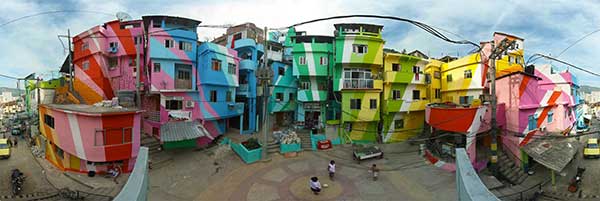
Artists Haas and Hahn created stunning artworks in the slums of Rio de Janeiro in collaboration with local people to use art as a tool to inspire, create beauty, combat prejudice, and attract attention.
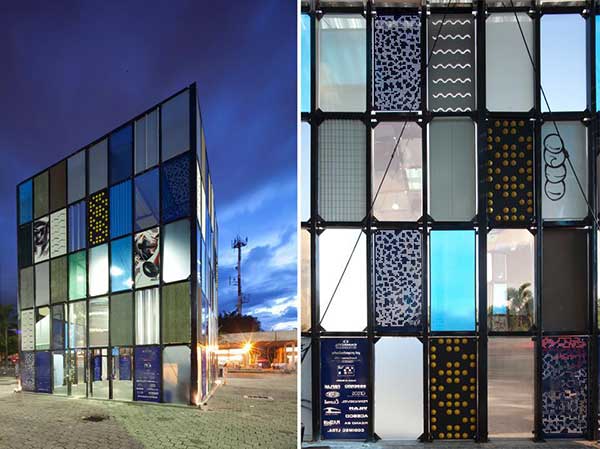
Felipe and Federico Mesa (plan:b) have made it their mission to give life back to tired old buildings and materials in Medellín, Colombia. They are well aware in fact, of the profound social differences that divide their country.
- I understand that you also hold competitions for architecture design. Could you tell us a bit more about that?
Competitions are a way, in which, designers can express their creativity and present their ideas without being swayed by the whim of a client. There is, admittedly, a brief, which sets out a number of constraints (the problems that need to be solved if you like.) Our competitions allow both established offices and young designers to explore themes that they might want to explore, but cannot for the simple reason that they do not produce the money that more commercial practices offer. We have found that the top design solutions, which appear in our competitions, are then featured in mainstream press and design press alike because they transcend the usual concepts for a new office building or park. They have real value that can be measured and yield benefits for all and not just those using them.
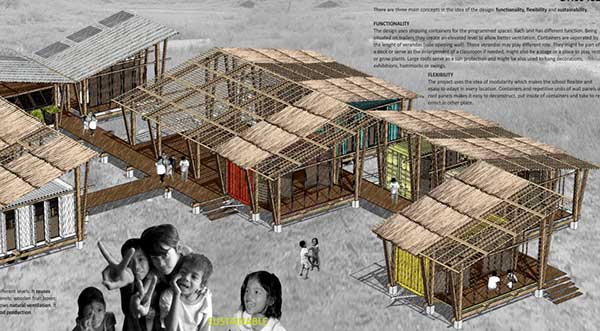
Izabela Karczmarczyk provides a solution using shipping containers and deals with overheating and reduces the industrial aesthetic by creating a timber and grass roof.
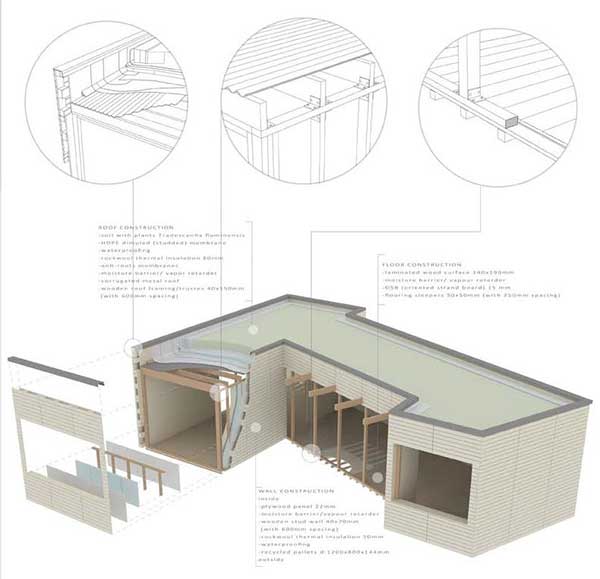
HOME competition student shortlist. Project titled “The Anti-Crisis Nest” combines functionality and sustainability.
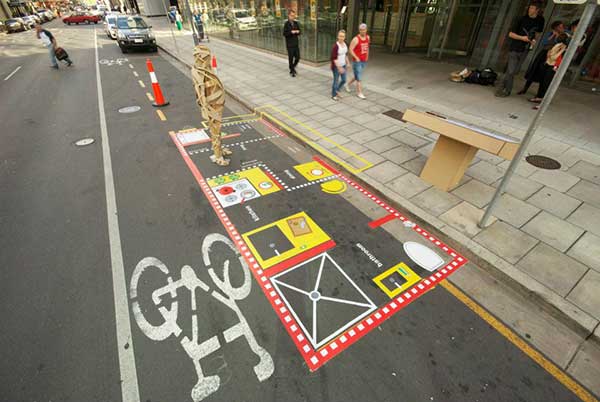
Mulloway Studio participated in PARK(ing) Day in Adelaide. They received an honorable mention in the HOME competition and Building Trust International along with other partners has agreed to continue to support their aim to realize their design for a $30k house.
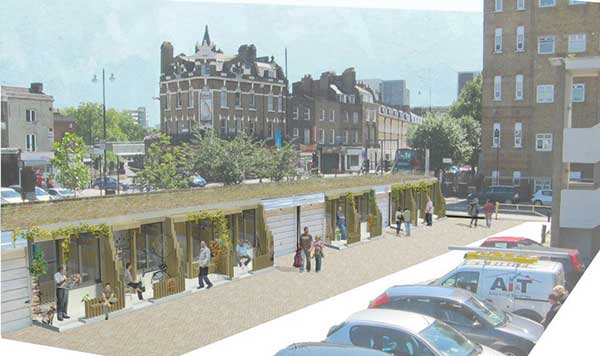
HOME competition winning entry professional category. Design by Pop-Up HAWSE, which aims to combat homelessness in the London Borough of Hackney.

HOME competition shortlist entry professional category. This proposal, located in Rainham, Greater London, seeks to provide sufficient, efficient, and necessity based community living.
- Which would you say were your most successful projects? Give us a short description.
The built projects get quite a bit of attention and this is great, we are undoubtedly proud of them. However, we believe the best work we have done to date is working with universities by directly setting course material or through the use of our competition briefs by tutors. There is a shift in the way young designers are thinking about design. For instance, what it means, how it will be contracted, and essentially re-evaluating what “good” design is. It is great to be part of this and to encourage the next generation of designers to get involved with the themes we are working on.
- Your latest project, “Moving Schools” takes place on the Thai-Burmese border. What is the objective of this project and what are the stages of development?
The Moving Schools project responded to the need to provide refugee and migrant communities with schools and public buildings that could be assembled and taken down, moved, and reassembled on a new site. This is due to the fact that these communities often have no rights to own land in their host countries. We unfortunately live in a world where refugee numbers rise and fall across continents each year. Design solutions for displaced people range from UN tents to makeshift structures and poorly made block and tin roof solutions.
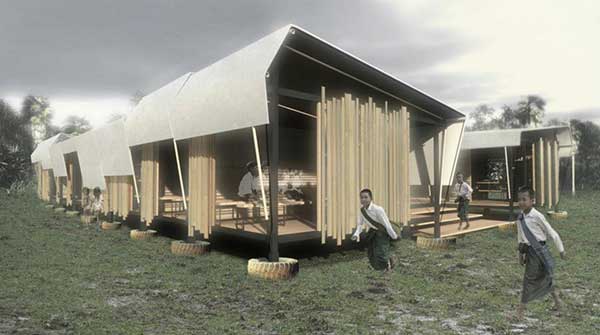
Winning design entitled BURMA (RE)FRAMED from ‘School 4 Burma’ competition design by Amadeo Bennetta / Daniel LaRossa from Berkeley, CA, USA.
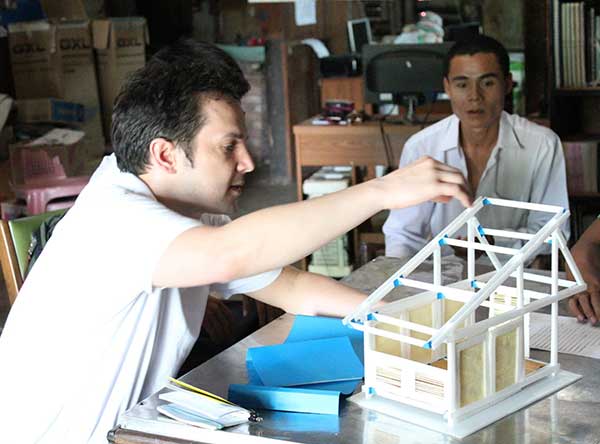
David Cole (Co-Founder) of Building Trust International explains the classroom and roofing structure with teachers from Kwe Ka Baung and school Headmaster.

Kids affected by typhoon at Shwe Tha Zin Learning Centre from existing migrant schools on Burmese Border.
- What are Building Trust International’s goals for the future? Where and on what do you see yourself working on over the next few years?
We would like to see the completion of the projects that we are currently working on, which focus on finding housing solutions for the homeless in London and designing a prototype for flood resistant housing in Cambodia. We are very keen to continue our core goal of encouraging designers to get involved with humanitarian projects. We are exploring new ways of developing projects with peer-based models, sponsorship, and crowd funding. Additionally, we have some exciting new ideas regarding how to engage the public in the design process and to harness the growing desire of people to get involved and we encourage people to set up their own initiatives. We also have a fantastic new competition beginning later this year! Organizations like Building Trust International is what architecture and local communities need these days to push forward the implementation of innovative ideas for improving people’s quality of life. It’s not only a case of architecture for aesthetics and practicality, but ultimately architecture for change! So, if you have a great design in mind, submit it for their competitions. If you want to develop your skills and help people, volunteer, and have a hand in making these projects happen fundraise or donate! Great people talk about ideas and awesome people make things happen! Find out more here Interview conducted by Oana Anghelache Enjoy what you’ve read! Support us and pick up one of our awesome T-shirts and hoodies today, Click the link
This article was originally submitted to Landscape Architects Network
Ten Films You Should See If You Are A Landscape Architect
Architecture seems to have got its own list down; Blade Runner, The Fountainhead, Metropolis…but what about Landscape Architecture? With the discipline being so wonderfully varied, the possibilities to be included in such a list are endless! Here I merely outline ten films that I think should be considered for such a list. This list comprises of films that have inspired and some of which have given a haunting glimpse into our future and us. Topics covered include; environmental impacts, conservation, climate change and even edible landscapes, from the mines of Moria to the depths of outer space. So when you’re struggling for inspiration for your next project or you want your perception of landscape questioned, here are ten films you should watch! Get the popcorn!
10. North by Northwest (1959) This film is often included in the architecture list due to the stage designs being profoundly influenced by Frank Lloyd Wright. Yet the film also speaks of landscape too. For instance the almost Noguchiesque square as Cary Grant flees the Plaza Hotel and the evil lair/house of Vandamm that is built into the hill; prescribing to Wright’s belief that “if you build on top of the hill, you lose the hill.” 9. Silent Running (1972) Whilst not the most exciting film on the list, there are some great messages about peace, love and photosynthesis. Lowell is a botanist-come-astronaut charged with the mission of keeping the last bit of known vegetation alive in greenhouse-spaceships. His rant “I picked it and I fixed it. And it has a taste, and it has some color and it has a smell” hits home. 8. The Secret Garden (1993) Where would a childhood be without The Secret Garden? As the young Mary discovers the garden, she begins to bring it back to life. The film depicts those rare occurrences when you truly appreciate what it is like to embrace something with childlike wonder…. How we often feel when discovering elements of nature. 7. Chinatown (1974) One would hope that such challenges as corrupt officials and murder wouldn’t face us all in our everyday careers. This film however, highlights the problematic relationship between big money, the city and environmental concerns. Set in 1937 it was inspired by the California Water Wars of the 1910’s and 1920’s. 6. The Lord of the Rings Trilogy (2001 – 2003) It’s in here for the obvious reason – the scenery! The landscape of New Zealand works incredibly well as the setting for Middle Earth. As the tourist board website points out however – it took two years to film the Lord of the Rings Trilogy… but it took nature millions of years to build the sets. 5. The Mountain (2011) I have chosen not to include documentaries per se in this article as it should merit a top ten of its own, but I couldn’t resist putting in a time-lapse video. The Mountain by Terje Sorgerd deserves a special a mention for the awe-inspiring recordings of nature (including what the Milky Way looks like through a sandstorm at 00.32) that will leave you feeling refreshed, exhilarated and incredulous all at the same time. 4. Day of the Triffids (1962) Plants fight back! Nature reigns supreme! Based on the exceptional novel by John Wyndham this film takes a look at what happens when (alright, alien based) nature goes mental. 3. Brazil (1985) Terry Gilliam’s dystopian masterpiece; The colossal architecture that represses the workers juxtaposed with Sam’s dreams of flying over the beautiful open countryside are the old utopia vs. dystopia, gemeinscahft vs. gesellschaft, innocence vs. capitalism dialectics given a postmodern dressing. And what about those nuclear reactors painted the color of the sky? Spookily full of foresight some may say. 2. Willy Wonka and the Chocolate Factory (1971) Optical illusions, trompe l’oeils, playfulness and delight… A reminder that although Landscape Architecture is in the midst of a struggle to be taken seriously as a profession, we should never forget to enjoy our work. That planting! The “Pure Imagination” scene is an absolute joy to watch – all done without special effects. Chocolate rivers, cream filled mushrooms, tea cup-flowers… Now that’s what I call an edible landscape!!! 1. Soylent Green (1973) This is an absolute must for anyone interested in not just Landscape Architecture, but urbanity, food in society, climate change and beyond. The tears bought to Sol’s eyes by real food and the swarming mass of people as they crawl over each other like ants, fighting to survive in an eternal heat wave, are potent images concerning the future. The nasty climax of the film is sensational but the most lasting message is when Thorn sees images of what earth was like before he was born. That is to say, with animals and greenery; “How could I know? How could I ever imagine?” he cries. So there we have a mere 10 films featuring: hard landscape, food, botany, topography, nature, horticulture, infrastructure amongst other elements. As Landscape Architecture as a profession continues to grow and become more known, perhaps an established, critically engaged, filmography will develop. But for now, this article is meant to highlight inspiration as well as offering films that are provocative to current debates in landscape architecture. Undoubtedly I’ve missed some out – what would you recommend? Article by Sonia Jackett Enjoy what you’ve read! Support us and pick up one of our awesome T-shirts and hoodies today, Click the linkThis article was originally submitted to Landscape Architects Network
Interview: Nigel Dunnett On Planting Design
Following his interview on working as one of the lead planting design consultants for the London 2012 Olympic Park, Professor Nigel Dunnett shares his passion and background on planting design, along with his philosophy and approach on the landscape profession. Nigel is a professor at University of Sheffield, as well as being the director of the Green Roof Center at the University. With his strong horticulture and ecological background, his most well known designs has been the Royal Bank of Canada at the London Wetland Center and gardens for The Chelsea Flower Show and of course, London Olympic Park.
- What determined your passion for this field?
I’ve been interested in plants and nature since I was very small. I grew up in the countryside in the UK in a village and my parents were both keen on gardening and I guess I had that in me from an early age about working with plants. Some of my earliest memories were about growing plants and making more plants. I suppose I was always keen on growing plants because I had a horticulture background.
When I went to University, I decided what to do. I could have studied landscape architecture or I could have studied horticulture or design but I kind of thought I could teach myself all of that just by reading, doing and visiting. So I first of all had scientific training- I studied plant science. For my Masters I studied Landscape Ecology and Landscape Management and then came to Sheffield University to do a PhD in plant ecology. So actually my whole background and training is in science but my whole experience and working has been in the design field with working with planting design, horticulture and landscape management.
- So do you think you can teach someone to be a designer or do you think people can, like you mentioned, teach themselves?
I can see just by working here that a lot of students come with an inbuilt talent and maybe it’s just the case of adding some technical knowledge and guidance. I really do feel that a lot of informed design has to have a very strong theoretical background. So you can design conceptually and it can be done very successfully, but if it isn’t glued with some form of reality or theory or background knowledge, and all there is present is a concept, then that’s how it will stay. I think it’s like being an artist, people have it within them, and maybe the training is about liberating some of that creativity within.
- What or who has been your biggest inspiration? Or do you have any at all?
Let me think…the cliché is that you have inspiration from nature, and I think that has to be true. I’ve also been inspired by a few artists, like Bridget Riley who is a modern painter. She works with patterns and a lot of repeating in color that is very similar to the way I think about planting. It always has to go back to being inspired by nature. For me it’s not about looking at a scene and trying to copy it. It’s about the process and how it works- the dynamics of nature which changes through time and I’m kind of fascinated by the succession of change through time. I’m also inspired and fascinated by small scale details- like seeing a tree and how moss or ivy would grow on the trunk of a tree, that kind of detail at a small scale- for some reason, I just find that really inspiring as well.

RBC Rain Garden at the London Wetland Centre © Copyright Marathon and licensed for reuse under this Creative Commons Licence. Photo credit: Ian Yarham – Geograph
- You are a knowledgeable professor on planting design. What is your design philosophy of planting?
It is ultimately about creating this exciting and uplifting feeling- it has to be. It’s about making things, which are so exciting that they make people feel “Wow, I’ve never seen anything like it!” And it is about doing things that make people feel surprised by the beauty of planting. So it’s about the beauty and the aesthetics. A lot of the work I do is planting within a design context- how you experience that and how you go through it and interact with the process can be a very emotional thing. The philosophy beyond that, of course, is about sustainability and about minimizing water and fertilizers and maintenance. Planting should also be done to enhance biodiversity, supporting pollinating insects and such. So in the end, it is the dynamic combination between the aesthetics and the natural processes.
- What are some of the determining factors for plant and material selection for a particular project?
Well, there’s always a vision in my head that I want to achieve. I’m very interested in color I must admit, it’s very important to me, and I do work very hard to think about color combinations. That is often the first step- coming up with some sort of a color combination that can be very striking and challenging or very soft and very gentle. Then of course, you have to think about the contrast and the forms and the textures. It’s very important that you have a good contrast between the planting forms and textures. I guess for me it’s that dynamic quality of changes over time; the fact that what we do will look good for most of the year but it will also look different at different times of the year. But definitely, it’s becoming more and more about color that I’m interested in.
- Can you talk about how the landscape profession has changed over the years- and has this affected you?
I think the big thing is that more and more people are recognizing the value of green infrastructure and planting, such as green roofs and rain gardens. People are gradually starting to realize that these landscape led approaches are very valuable. There have been big movements of landscape urbanism, ecological urbanism. In particular I think ecological urbanism is one of these ones which have staying power, where the landscape architects are the only people who can really play a role. It’s about connectivity and joining spaces up and thinking about special arrangements first then the buildings come around that. That kind of design setting is really where landscape architects come in. The Olympic Park was one of the projects where landscape architects led the project rather than coming in at the end. The landscape architects were the people setting the framework. Sometimes the ecological approach is very fashionable then becomes unfashionable. But I think it is going beyond fashion now, to being absolutely integral.
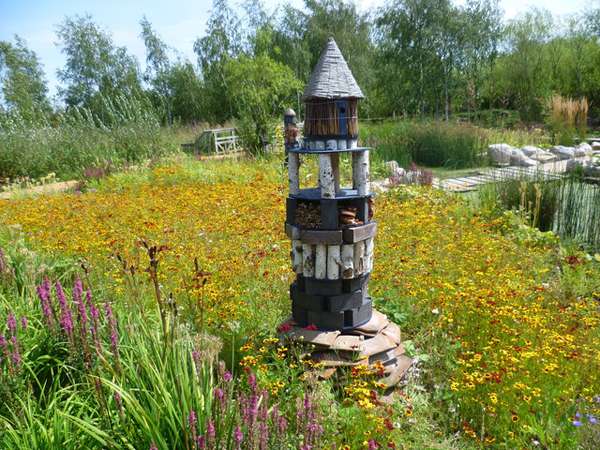
RBC Rain Garden at the London Wetland Centre © Copyright Marathon and licensed for reuse under this Creative Commons Licence. Photo credit: Ian Yarham – Geograph
- What advice do you have to give to young designers and students reading this interview?
It’s about being passionate. Sometimes with students it can be very difficult to sense that passion and that excitement. Be bold and have strong ideas and don’t be timid about these ideas. That’s the danger with all of this stuff- there’s so much timidity and caution. So liberate yourself to be creative but recognize where you need that knowledge and support. Hopefully, this interview has been a source of inspiration for all. What Nigel has shared uncovers some truths about this broad field of the landscape profession and the fact that there is always much to be explored and discovered; what hasn’t been created can still be done. Check out Nigell Dunnett’s book in collaboration Noel Kingsbury – Planting Green Roofs and Living Walls by Nigel Dunnett and Noël Kingsbury Interview conducted by Win Phyo
This article was originally submitted to Landscape Architects Network
Competition Giveaway: Mendelsohn’s Incessant Visions
How much do you know about the lives of those affected by the events leading up to and including World War 2? How about those who helped develop some of the most important design movements of the 20th century? Keep reading for your opportunity to win a DVD exploring these issues…….. Erich Mendelsohn, an architect whose career spawned alongside contemporaries such as Walter Gropius and Ludwig Mies Van Der Rohe, produced some of the most spellbinding works while in the face of danger. From producing architectural sketches in the trenches of the First World War, to escaping persecution in Nazi Germany. After returning from the frontline, Erich Mendelsohn soon became the head of Germany’s then largest architecture firm. However, as tragedy was rife in Mendelsohn’s life, this situation did not last. In 1933, with the rise of the Nazi government, Mendelsohn was stripped of membership from the Architects Union, his assets seized, forcing him to relocate to Holland and again to Britain, fleeing the expansion of the Third Reich. Mendelsohn’s life and work is now the subject of a new film, which we have been lucky enough to receive 4 copies of to give away!
Mendelsohn’s work is littered across cities from around the world, the physical manifestations of his creativity marking his path to freedom, his escape from persecution, which saw him and his wife flee from Germany, to Holland, England and Palestine, before settling in the USA in 1945 until his death in 1953. Mendelsohn’s work is reflective of the time, forming a reciprocal influence with the Bauhaus and Modernism movements. His designs representative of expressionist architecture, with a strong focus on dynamic functionalism, echoing the principles of Bauhaus. Mendelsohn’s most famous works include The Einsteinturm, Petersdorff department store in Wrocław, Work hall of the Herrmann hat factory, Luckenwalde and The De La Warr Pavilion, England. All of these projects demonstrate Mendelsohn’s use of light, organic shapes and unity. From Duki Dror, comes a film that documents the life and work of Mendelsohn, a visionary, whose work has been described by Albert Einstein as “organic”, in specific reference to The Einsteinturm in Potsdam, Germany. The documentary studies not only the work and importance of Mendelsohn to architecture, but the relationship between him and his wife Luise, which endured much hardship, yet inspired them both. Dror explores the work of Mendelsohn through the comparison of his work with contemporary projects, with the aid of interviews with architects influenced by Mendelsohn’s work.The film is beautifully put together, exploring the architectural and cultural movements of the time, while also acting as a biography of the troubled architect. Don’t miss your chance to win a copy, courtesy of LAN! This is undoubtedly a snapshot of a turbulent point in history, but also the origin of vital movements in the field of art and architecture; the arts and crafts movement, modernism, the opening of the Bauhaus School and its subsequent exile from Germany. A history of tragedies, yet this film documents the endurance, determination and triumphant character of those caught in the crossfire of war and persecution, especially Erich Mendelsohn. Read on to find out how you can land your hands on a copy of the film! Mendelsohn’s Incessant Visions is a celebration of art, architecture, love and the human spirit. This is a must watch for all lovers of architecture, design and social history. Here at LAN, in association with the filmmakers, we are offering a giveaway of “Mendelsohn’s Incessant Visions”. If you would like to win one of the four copies of the DVD that we are giving away, please comment below telling us which is your favorite Mendelsohn building, winners will be chose by chief editor Joe Clancy. Links: Duki Dror, Filmaker/Director: https://www.architectmovie.com/filmmaker.html Israel Art & Architecture: https://www.facebook.com/Israel.Architecture?fref=ts Article written by Joe Clancy Enjoy what you’ve read! Support us and pick up one of our awesome T-shirts today, Click the linkThis article was originally submitted to Landscape Architects Network
Interview: Nigel Dunnett on the Olympic Park
Just a week ago, I had the pleasure of interviewing Professor Nigel Dunnett from University of Sheffield about his experience in working as one of the lead horticulture and planting design consultants for the 2012 London Olympic Park, along with fellow colleague James Hitchmough. Whilst being in the landscape ecology profession for many years, carrying out the planting and designing for the Olympic Park has been the most memorable and challenging projects for Nigel. Dive into his insights on being part of a project of a tremendous scale…
- Could you describe your role in the design of the Olympic Park?
James Hitchmough and I were taken on as the main planting design consultants of the park. What they didn’t want to do was have something very traditional- looking at UK’s heritage and trying to recreate some sort of a Victorian Park. They wanted the Olympic Park to show what Britain might be like in the future. So that’s very much what they did and took us on.
The great thing was that we were part of the design team from the start so we were working with all the landscape architects and having the influence over the whole master plan. What was also great is that because we had such a long involvement, we were able to work with the contractors and be on site for the last two years to implement everything and to look after it. We went from a very conceptual thinking to doing the drawings through actually being on site- it was very exciting!- How would you characterize the design process that you carried out for the design of the Olympic Park?
We were working with the main Masterplan. We were inspired by the UK’s natural habitats and making designed versions of them- more enhanced, more colorful, more visually strong– but still very much with an ecological framework so putting plant communities in the right situations. Within the 2012 gardens, we were able to look at fantastic landscapes around the world and produce stylized designed versions of them, which were very naturalistic yet very architectural as well. So we went from celebrating the UK’s natural heritage in the wider part of the park to the designed versions of fantastic landscapes from around the world. We chose four different regions to represent biodiversity hot-spots from European influences, which was closer to home, to North America, to Asia, particularly China and Japan, and then South Africa, Australia and New Zealand. They were all starting points for doing a stylized design of these idealized beautiful landscapes.
- What were the challenges you as a designer had to overcome in the process?
The first was that it all had to look good for the opening ceremony. It was incredible to be working for five years and just zooming on one day, and to be told that that was all that mattered. Of course that meant that it didn’t really matter, for this year, what happened in the spring and early summer and autumn and winter. We were just designing for such a small time scale. To make wildflower meadows flower for late summer, we had to push everything back. The biodiversity action plan was the main thing and we all had to meet that. We had to make every square meter that we worked on have some sort of a biodiversity habitat value. The idea of having the 2012 gardens in the park was not there to begin with and that was something we had to push for. The planners really wanted it to be native plants only and to recreate the countryside. That was the initial idea that they had so we had to really fight for the idea of the gardens, which had to be beautiful and fantastic for millions of people visiting- like a festival landscape.
Then of course having millions of people over for five weeks was a huge challenge, which did result in quite a lot of damage. The pressures were so great, there was no second chances so it was quite a stressful thing. But there were also backup plans if things did go wrong. The final back-up plan was to cover everything with grass and we always had this thing in the back of our heads that if we didn’t get this right, we would put grass everywhere. It really was only until the very last minute that we were able to relax and think that well actually, this is going to work. The weather was also very difficult. We had the two driest winter ever, so we had water restrictions. Then suddenly it switched and we had the wettest summer for 100 years or so and the cold in the spring so it was a challenging weather. In the end, having a wet summer was king of useful to us because it was good for the plants. Now it’s very challenging on personal terms to have a normal life really during that time! It was our reputation really that was on the line because we were doing things that nobody has ever done before with all the seeding of the naturalistic planting. So we were going throughout thinking yes this is going to work but I think we both knew a little bit that it might not work. So yes, it was very challenging.- Did you feel personally that the project included all the people in London? Or during the design, did you feel the design team considered these kinds of poorer neighborhoods in the London’s project?
It was a huge regeneration project so the whole basis of the design was to regenerate the area and attract a lot of new investments and put new facilities. That was always the basis of the design. In that sense, yes, the whole philosophy was to improve the environment to what was a very disadvantaged area. Now beyond that, of course, there were lots of small-scale problems within the local community. A lot of route ways and footpaths were closed off so people couldn’t get around the area. There was also a big thing about allotments, which were taken over and people displaced from there. James and myself were purely there to do the planting and I suppose our viewpoint was that it was such a fantastic thing that those local problems were for the local politicians to work with. I think in the future, part of the park you will have to pay to get into. But the old footpaths and route ways through will be opened up again. There will be a huge amount of economic activity happening on the area so I think on the long term it will be very beneficial but of course, on a short medium term, there were problems to be resolved. I think the big picture is that, this kind of intervention is a massive thing to happen in that kind of area. The Olympics is such a big thing that this kind of thing is bound to happen.
- Would you say that what you envisioned for the site has been achieved in the end?
Absolutely, if not more! It was a big experiment and what we did has never been done on such a scale before. I think it was very successful. The public response was so huge that it was more than the vision that we had- the way that the park has been seen as such a great representation of the UK and its landscape. And the way the public responded to the landscape, well, we had no idea that it would be like that. We knew it would be good but we didn’t know it would be that good! The Olympic Park was and continues to be a project of epic proportions, with its legacy impacting upon generations for decades. The management and design implemented by Nigel Dunnett and his colleagues goes to show the colossal amount of input and co-operation needed to achieve a vision. Find out more about the 2012 Gardens in the Olympics Park here on Nigel’s website. Interview conducted by Win Phyo
This article was originally submitted to Landscape Architects Network
X-Section Interview- University Magazine for Landscape Architecture
You may or may not have heard of them, but X-section is an association developed by the Unitec Department of Landscape Architecture in Auckland city, that has the aim of promoting landscape architecture on an international scape. This team of students and teachers recognizes the role of landscape architects and the solutions and innovations they can bring to the everyday problems of our environment. Recently, on the 30th of November, X-section launched their second edition magazine for 2012. The magazine encompasses projects, ideas and designs submitted by students, architects and more. The aim is to raise awareness on the importance of landscape architecture and generally raise more fans to the topic which can often be disregarded to its older brother, plain architecture. We are quite excited about this team and their publications, so we managed to speak with designer Chris Judd, editor Peter Griffiths and assistant editor John Allan. Let’s see what they had to say!
How did the idea for an annual publication on landscape architecture come about? What are the reasons behind this initiative? And why ‘X-section’ as a name? X-section was born out of the need for Landscape Architecture to be better represented at Unitec. Previously LA students collaborated with Architecture to produce a yearbook style publication called Asylum, but the landscape students were often misrepresented or drowned under the sheer volume of architecture work. (30 students a year intake for landscape vs. 60-90 for architecture). X-section gives our landscape students and academic staff a medium to communicate with practice. Once it was decided that there was room in the budget for an exclusively landscape publication, a few students were shoulder tapped and asked if they wanted to be involved. The name X-section arose from a few conditions; we wanted a recognizable brand; a landscape architecture term (cross sections are a vital tool for the interpretation and understanding of the landscape, much like what we want this publication to be); and most pragmatically, the name had to be available online, and be unique to the magazine/journal form. Tell us a bit about the people behind this project and their respective roles. How did you come to work together? At X-section it is very much a student collective, a collaborative project and we try to avoid roles per se, so this is an attempt to describe how the whole thing runs. Pete Griffiths – Senior lecturer and co-founder of firm Field LA. Pete brought the idea to fruition, he found the money in the budget and convinced the faculty it was a good idea. Then, as all good educators/facilitators do, he stepped back and let the students experiment and run things. Much like the art of acupuncture, Pete gives very minimal but highly effective input, empowering the students to take ownership of the process and the result. John Allan – John was part of the initial group of 4 students who ran issue one; he has stayed on in a mentoring / teaching role for issue two. John has a background in graphic design and printing and has one year remaining in his Bachelor of Landscape Architecture. Chris Judd –Design and production for issue two. He is a student of the Bachelor of Landscape Architecture at Unitec and has one year remaining in the degree. Olivia Koch – Design and Production for issue two. She is a student of the Bachelor of Landscape Architecture at Unitec and has one year remaining in the degree. Tamatoa Taruia – Design and production for issue two. Tama has just completed his final year of the Bachelor of Landscape Architecture. What do you think landscape architecture, as a concept which can be applied, means to this day and age? What do you think it will become for future generations? We think landscape architecture is starting to get a better profile, but as students of the art, we are becoming more and more surrounded in it. Landscape architects are certainly starting to leave their mark in Auckland City, where X-section is based, which will hopefully be a legacy for generations. We certainly feel that landscape architecture as a profession is playing a bigger role worldwide in building cities and changing them for the better, there is still a long way to go and technology, in all of its forms, will continue to effect the influence landscape architecture will have, which is something we explored in issue one of X-section. What is the general structure of the magazine? Do you have any special features that we should look out for? What do you look for in submissions? The magazine is generally structured around student work, and what students are exploring for the year, and then the articles are woven through that structure based on their relevance. There is an overall question that all the articles are responding to and the team each year write an intro and summary article to try and frame the issue, as if it was a research project in itself (which it is). Special to issue two is our first double-blind peer reviewed article, which was made possible by our expert review panel which includes two highly renowned professionals from here in New Zealand, and one from the University of Guelph, in Canada. We are excited about having an Academic Journal component to the publication and will be building on this in the coming years.
Image by Rebecca Cray from her 4th year negotiated study research project and peer-reviewed article in x-section 2012 entitled ” The Ultimate Dichotomy; conservation and tourism”

Image by Auckland based Photographer Simon Devitt from his article in x-section 2012 entitled “Capturing the Feeling”
This article was originally submitted to Landscape Architects Network
Patricia Johanson Interview
Imagine a park where you can play, learn about biology, discover knowledge about animals, and learn about the bioremediation process. Ultimately this park helps in the conservation of native plants and, in conjunction, forms a piece of art and all the components such as human use, infrastructure, hydrology, plants, and animals are mutually supported. That is what you can sense in Patricia Johanson’s projects. She understands that the more functions and parts that are present will facilitate the best “performance”. Also, the systems do not have to be monolithic; instead they should work as an ecosystem. She looks back in time to find examples in ancient cultures that, in her own words, “harmonized and worked with natural systems and find a different model for the built world, one that is less dependent on aesthetic styles and mechanical systems.” We had the opportunity to interview Patricia Johanson and learn how this multidisciplinary mind works as an artist, architect, landscape architect, ecologist, archeologist, sociologist, and engineer.
- In your own words can you define what you do?

Fair Park’s Leonhardt Lagoon (Dallas, Texas)
- What’s changed in your projects today from the projects you started out with? And what caused that change?
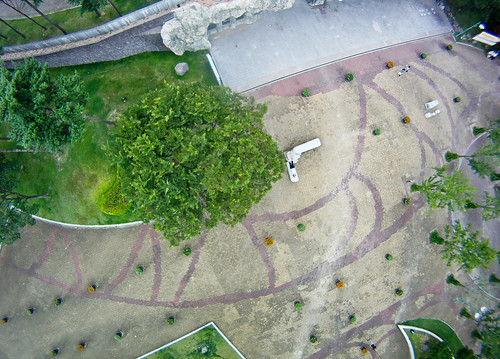
Ulsan Grand Park (Ulsan, South Korea)
- Do you consider having a principal axis or main part on your projects, I mean, ecological, urban, social or another?
All of the parts deserve equal consideration because, if you use the “ecosystem” approach, they are all essential to the well-being of the “whole”. It is not a matter of what is “dominant” and what is “less significant”, but a matter of balance, and understanding that each element is vital. I grew up in New York City so urban and social issues are very important to me. This is part of the reason I only design public sites that are available to everyone. Developing an understanding of, and care for, nature is essential, particularly for children, so native plants and animals living in ecological communities are part of all my projects. I am also interested in restoration, which includes reconnecting fragmented systems and making the land healthy and productive, not merely “decorative”. To be successful, you really do need to consider everything.
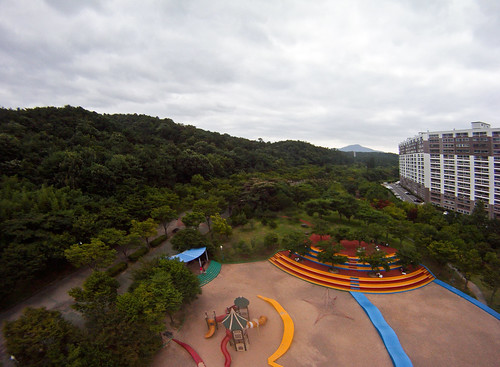
Ulsan Grand Park (Ulsan, South Korea)
- Could we say that snakes and plants are a very recurrent object in your design, If yes, why? How would you describe the process of choosing an object for a new proposal?
The Endangered Garden (San Francisco, CA)
- I’ve read that you like music and you try to include music in your projects, how do you do that? Would you like to design a project where music was more present?
I began as a musician and because my work is so large, the composition is revealed over time. Walking establishes a certain rhythm, an inner “beat”, and as a designer you can control that rhythm, just as a highway engineer does, through sharper or more gradual curves and stopping points. I think it would be interesting to work collaboratively with a musician, but one of my favorite sounds in nature is silence, which stimulates deep “listening”. This can also be very reflexive, as it reverts to your own heartbeat.
- You consider the elements of “insecurity” or “instability” in your parks, what are your intentions in considering those feelings?
I don’t design places that are actually “dangerous”, but I also think we have gone too far in assuring people that “design standards” will protect them. I think it is important for people to experience the world in all its diversity, and develop some personal understanding of how to avoid “accidents” and conflicts. Projects that look unconventional force people to pay more attention to their surroundings. Paths that traverse water without a handrail ask people to watch their footing and develop some “body awareness”. Tall grass or unfamiliar sounds of nature that may initially instill fear, become old friends as knowledge is acquired, which is why my “urban ecosystems” present complex nature within a familiar park setting. I also promote the fact that nature evolves, so the landscape may not look the same on every occasion. This is the opposite of maintaining something in a pristine state. My projects have all “aged” as they move from one stage to another, yet they remain interesting as they grow and change.
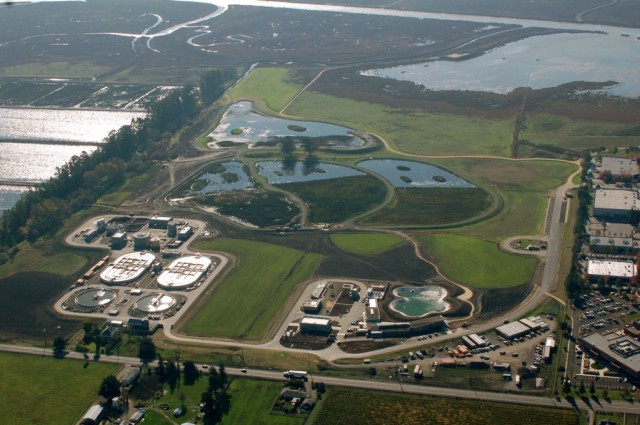
Petaluma Wetlands Park and Ellis Creek Water Recycling Facility (Petaluma, California)
- Do you have a favorite project or a project that you’re very proud of?
- Is there a particular place in the world that you really wish to design a park?
This article was originally submitted to Landscape Architects Network
Plant Profiles: Ginkgo Biloba
Rumored to be Frank Lloyd Wright’s favorite tree, we give you the bare facts on the Ginkgo biloba tree. Name: Ginkgo biloba Native to: South East China Height and Spread: The Ginkgo tree can grow well over 12 meters with very old trees reaching excess of 40 meters. The canopy can spread over 8 meters. Soil Type: Tolerates almost all soil types. The Best Location: The Ginkgo biloba likes to be planted in full sun, and in both sheltered or open conditions. Planting and care: The Ginkgo tree is a very hardy deciduous tree, also known as the fossil tree; it is believed to have originated from the Jurassic period with similar leaves discovered inside fossils from the British Isles. It originates from South East China, and can be found growing across Japan and Korea. Many Ginkgos exists as a form of cultivation dating back over a thousand years, planted within temples across Asia. It enjoys full sun and will tolerate almost any soil type; Acid, Alkaline or Neutral Chalk, Clay, Sand or Loam; but it does require well drained soil. The Ginkgo is a great tree to plant in urban gardens as it tolerates pollution and can grow in very confined spaces, due to this it is a very popular tree for bonsai. The leaves turn a yellow in autumn and can grow to 12cm in width. The leaves are rare among plants as they grow into a fan shape. The tree requires very little maintenance or pruning and the female plant will produces a yellow fruit, but it has a very unpleasant smell. The Ginkgo is believed to have medical properties which can help with memory gain and dementia, but studies have found nothing to support this. Check out our article on the Jo Yeates Memorial where a Ginkgo biloba was featured. Profile written by guest writer Aaron Carpenter
This article was originally submitted to Landscape Architects Network
Interview: Good F*cking Design Advice
Good Fucking Design Advice – their name says it loud and clear, but just in case you were unsure, a couple of clicks through their website will leave you with just that – some good fucking design advice! Like many before them, Jason Bacher and Brian Buirge were two grad school graphic design students with a funny idea – one they never thought could be taken this far. They only wanted to share the laughter they experienced with their “design advice.” Two years after their original “just for kicks” launch, GFDA is not only a 24/7 online advice generator, it is a business that sells advice on a mug, on a poster and even on a sketchbook; it is not your typical blue sky, big fields of grass meme type of advice though; it is straight to the point, practical punch lines full of well-known wisdom, but delivered in a new way.
Who is GFDA? JB: “GFDA is Brian Buirge and I, Jason Bacher. Our website provides basically the general design and creative community with advice. We serve as a voice for them – to vent their frustrations, share their passions and celebrate their successes.” BB: “The advice we provide is not groundbreaking advice, we just included the “f-word” and made this correlation or connection to design advice, so in some ways the advice itself is very universal.” JB: “Like Brian said, the advice isn’t groundbreaking, it’s been around forever. We just kind of reinvented it and delivered in a unique conceptual way.”
The “F-word”. Does that ever get y’all into trouble? JB: “I think we get ourselves into more trouble than that website gets us into!” BB: “If we had any opposition, we incurred it during that initial phase where we had people that would contact us and disagree with our approach. It was kind of hard to take it seriously because it was like; you’re taking it more seriously than we are. It’s a joke! So it was just a fun project in the beginning, and it turned into something which wasn’t your original intention? BB: “No, not at all. We started with like 25-ish pieces of advice the first day and we thought it was funny between the two of us. We honestly never thought ‘Oh man, everyone is going to love this, they’re going to find it funny and we’re going to sell stuff on it!’” JB: “And it’s going to control our lives and make us work every day…” BB: “Yea and it’s going to take over my basement!” (Everyone is laughing at this point) GFDA operates out of, and Brian lives in, the basement of a rental property – talk about dedication!
Who is your primary audience? BB: “Primarily we talk to designers, first and foremost, followed by more of the general creative community outside of that and then everybody.” JB: “I’d say age range probably college freshman all the way up to someone in their middle to late career.” What do you want people to leave with after they encounter the website? BB: “We want them to leave motivated about something. I hope that people come away with a motivation and a drive to pursue something that they’re really interested in or passionate about, or also to reconsider where they’re at and if they’re very unhappy with what they’re doing, to realize that there is another way that you can go.” JB: “And hopefully… they know that GFDA is always there, 24/7. So whenever they need the fire started, just visit the website, and there it is!” BB: “Worst case scenario, if they don’t leave with any of that stuff, at least they leave with a stupid grin on their face, I’ll be happy with that, too!” JB: “Yea, stupid grins, that’s what we’re aiming for.”
Where does the advice come from? JB: “We get a lot of the advice from experiences in life, books we’ve read, teachers we’ve had contact with, colleagues that have been inspiring to us… Brian and I had a lot of classes together and we would be in class and someone would say something, perhaps a professor or student, and we would look at each other and be like ‘Oh yea – that’s it, that was a piece of advice.’ So literally, for the longest time, they were coming out of everyday just experiences, both in the classroom and out.” Local Production A lot of the production of GFDA merchandise was initially produced in basements and garages. Brian and Jason support fellow local business owners by using their services to maintain the supply of GDFA merchandise. A fellow student who specializes in silk screen printing produces the GFDA posters, their t-shirt printer is a short walk away, and they create all of their packages and envelopes in-house. JB: “If we can do it here in town, we absolutely choose these vendors first.”
GFDA’s Future This has been the topic of discussion for Brian and Jason for a while now. They are at a crossroad where graduation is nigh upon them, and they could continue with GFDA or go in different professional directions. They are looking into redesigning the website to provide a different experience and expanding the product line – they have a new major poster out now! So stay tuned for new good fucking design advice from Brian and Jason. Whether the site leaves you profoundly inspired, or with a stupid grin, it is definitely a designer’s one stop shop for a smile =)
The GFDA Pledge You can check out the GFDA website at https://goodfuckingdesignadvice.com/. They have a “family friendly” version of advice and some family friendly merchandise, as well. We at Landscape Architects Network took the GFDA pledge, which goes a little something like; “I, (your name here), hereby swear to abandon all fear… I will never accept another’s standard for success… When I’m finished, no one will ever fucking look at (that which you are changing) the same way again.” Let GFDA advise and inspire you today! “Good Fucking Design Advice – Because sometimes, being your own worst critic is not enough.” Article written by guest writer Addie Benson Enjoy what you’ve read! Support us and pick up one of our awesome T-shirts today, Click the link
This article was originally submitted to Landscape Architects Network
Login
Lost Password
Register
Follow the steps to reset your password. It may be the same as your old one.





